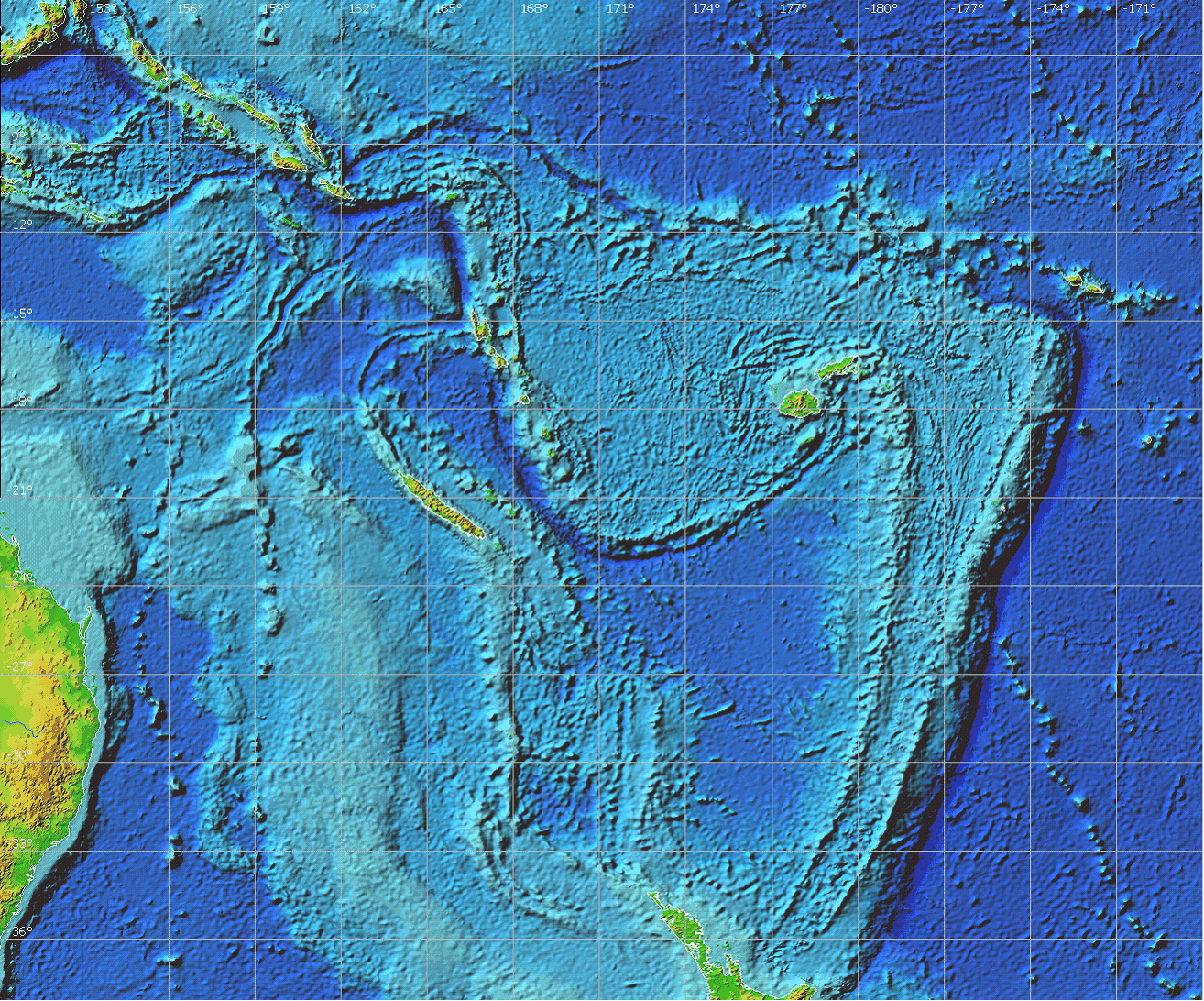SENAT
Report n° 117 (2007-2008) by M. Roland COURTEAU, Senator (for the parliament office for the evaluation of scientific and technological choices) - Appendix to the minutes of the 7 December 2007 session
Disponible au format Acrobat (21 Moctets)
d) In the Pacific
As has already been pointed out, the recognition of the vulnerability of New Caledonia and Wallis and Futuna has led France and the local authorities to begin installing sirens in these territories. However, in order for this measure to be effective, a reliable warning system must also be set up that allows sufficient time to the local authorities to activate the sirens.
Currently, there exists only one tide gauge in New Caledonia (Nouméa) and four tide gauges (Central Vanuatu, Fiji, Northern Samoa and Central Tonga) which are poorly positioned to effectively protect France's territories in the southwest Pacific.
A study - funded, in part, by the Junior Minister's Office for the Overseas Territories - was carried out last July, in order to evaluate the needs in tide gauges and tsunamimeters. The study's conclusions were as follows:
6 seismic zones were distinguished as being capable of generating tsunamis in New Caledonia and in Wallis and Futuna: the Solomon Islands, the Vanuatu Islands, the Loyalty Islands, the Fiji Islands, the Tonga Islands and the Kermadec Islands (see map below).
The tsunami-generating seismic zones threatening New Caledonia and Wallis and Futuna
1
3
4
6
2
5
West of Solomon Islands
West and south of Solomon Islands and north of Vanuatu Islands
South of Vanuatu Islands
South of Fiji Islands
North of Tongan archipelago
South of Tongan archipelago/Kermadec Islands
|
|

Source: CEA/DASE
- To the west and south of the Solomon Islands, as well as north of the Vanuatu Islands (zone 2 on the map): 4 sea-level measuring stations are necessary to detect tsunamis generated in this region: 3 tide gauges - one northwest of Esperitu Santo (an island in the Vanuatu archipelago), one southwest of Santa Catalina and one east of Renell Island (both located in the Solomon Islands) - and a tsunamimeter to the north, between the Solomon Islands and New Caledonia (that the Australians are planning on installing).
- South of the Vanuatu Islands and in the area of the Loyalty Islands (zone 3): an earthquake with a magnitude of greater than 7.1 in this zone would generate a local tsunami with a very short reaction time for the Loyalty Islands. 66 ( * ) However, the installation of a tide gauge in both Lifou and Maré would allow for a warning to be confirmed 20 minutes before the arrival of the first wave on New Caledonia and 2 ½ hours before the arrival of the tsunami in Futuna.
- North of the Tongan archipelago 67 ( * ) (zone 5): two tide gauges (one in Wallis and one in Futuna), so that if one of the two islands is hit by a tsunami, the other island can be notified of its approach (the maximum reaction time is estimated at 20 minutes). These two tide gauges would also be used to confirm a warning 2 ½ hours before the arrival of a tsunami from the Loyalty Islands or New Caledonia. In addition, 2 other sea-level measuring stations are necessary to confirm as quickly as possible (10 to 30 minutes earlier) the tsunamis generated in this region: one tide gauge installed south of the Samoa Islands and one at the far northern end of the Tonga Islands. A tsunamimeter east of the Tongan archipelago (that the Americans are expected to install) will later allow for the tsunami's magnitude to be confirmed.
With regard to zone 1 (west of the Solomon Islands) and zone 6 (south of the Tonga Islands/in the area of the Kermadec Islands), these zones will be monitored by the tide gauge planned to be installed east of Renell Island, as well as by the measuring devices that Australia is expected to install. 68 ( * )
To sum up, the sea-level monitoring system for this region must include:
- 7 tide gauges in the French overseas territories (3 in New Caledonia, 1 in Lifou, 1 in Maré, 1 in Wallis and 1 in Futuna), with the Wallis and Futuna stations contributing to the warning system covering New Caledonia and the Loyalty Islands for tsunamis generated in the Tongan archipelago, and with the Loyalty Island and New Caledonia stations issuing regional warnings for tsunamis generated in the Vanuatu Islands and Loyalty Islands.
- 6 sea-level measuring stations installed off other islands, to detect as soon as possible tsunamis moving towards the French territories (2 in the Solomon Islands, 2 in the Vanuatu Islands, 1 in the Samoa Islands and 1 in the Tonga Islands).
- 1 tsunamimeter installed by the Australians north of New Caledonia.
To complete the system, two tide gauges should subsequently be installed in Ouvéa and Ouinné, as well as a tsunamimeter in the Tonga Islands and Fiji Islands.
As has already been pointed out, the Junior Minister's Office for the Overseas Territories is well aware of the stakes and is helping to fund the setting up of a warning system in the southwest Pacific. Nevertheless, its finances are insufficient. Political arbitration is therefore essential to finalize the structure of the warning system for New Caledonia and Wallis and Futuna and establish a suitable budget.
* 66 In this case, the warning system for the Loyalty Islands will rely on educating the population, which must learn to automatically quit the coast for higher land should it perceive any signs of a strong earthquake having occurred.
* 67 This zone also includes the island of Futuna, in the area of which a tsunami-generating earthquake could occur. However, as in the case of a tsunami-generating earthquake occurring in the area of the Loyalty Islands, the nearby earthquake would have to be immediately detected in order to warn the island's population in time, due to the very short delay between the earthquake's occurrence and the tsunami arrival.
* 68 Australia plans on installing a tide gauge on Tagia Island, as well as a tsunamimeter north of New Caledonia, in order to monitor tsunamis from zone 1. To monitor tsunamis from zone 6, the tide gauge that already exists in Nukualofa and the two new tide gauges Australia plans to install in Raoul Island and Norfolk will suffice. Finally, zone 4 (southern Fiji) is less dangerous, due to the fault zone's orientation.








